St Paul's Anglican Church
cnr Church & Thomas Streets, East Devonport
B. c.1864 Jesse Biggs for private use; inst. present loc. 1890.
Res. 1974-75 Laurie Pipe Organs. Res. 2001 Hans Meijer after fire in church.
1m., 7 sp.st., pedal pulldowns, tr. Man: 8.8.8.4.4.2. Ped: 16.
Historical and Technical Documentation by John Maidment
© OHTA (last updated May 2011)
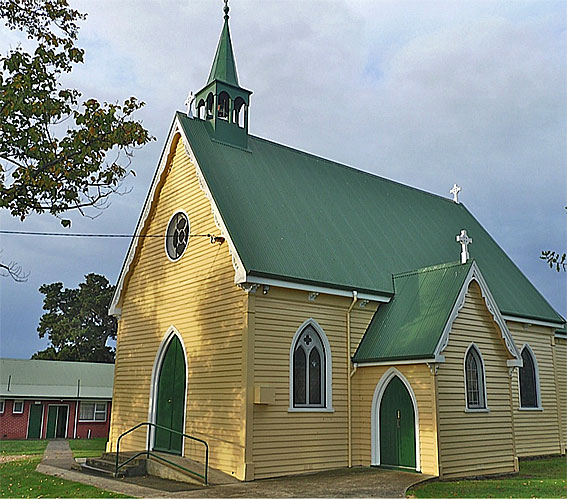
St Paul's Anglican Church, East Devonport : exterior from south-west
[photograph by Trevor Bunning (May 2011)]
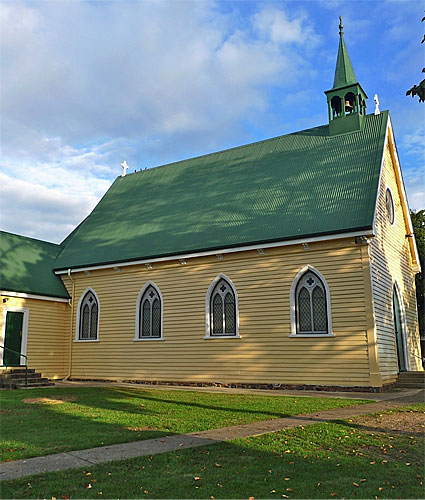
St Paul's Anglican Church, East Devonport : exterior from north
[photograph by Trevor Bunning (May 2011)]
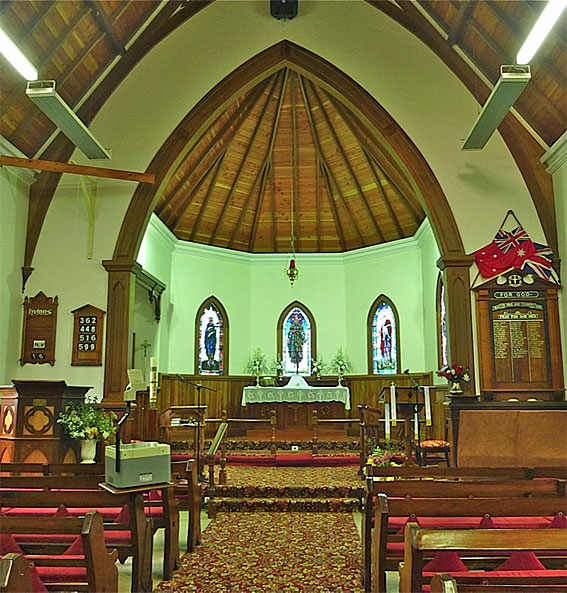
St Paul's Anglican Church, East Devonport : interior looking east
[photograph by Trevor Bunning (May 2011)]
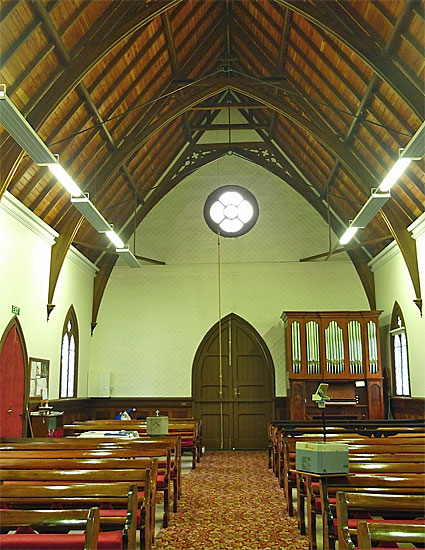
St Paul's Anglican Church, East Devonport : interior looking west
[photograph by Trevor Bunning (May 2011)]
St Paul's Church was built between 1876-79 at a cost of £425 to the design of architect William Gadsby.1 It is a fine example of a church built in timber. The building was substantially damaged by fire on 12 January 2001 but has since been expertly restored.
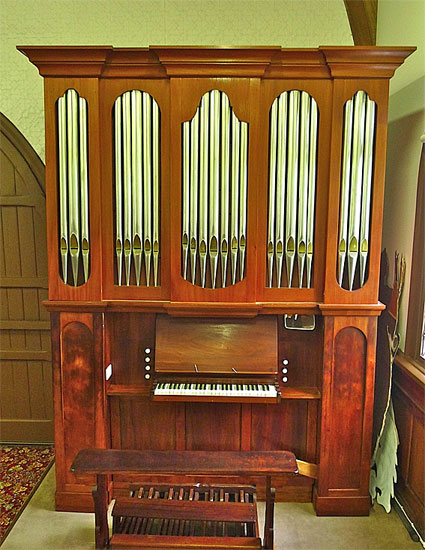
St Paul's Anglican Church, East Devonport : organ
[photograph by Trevor Bunning (May 2011)]
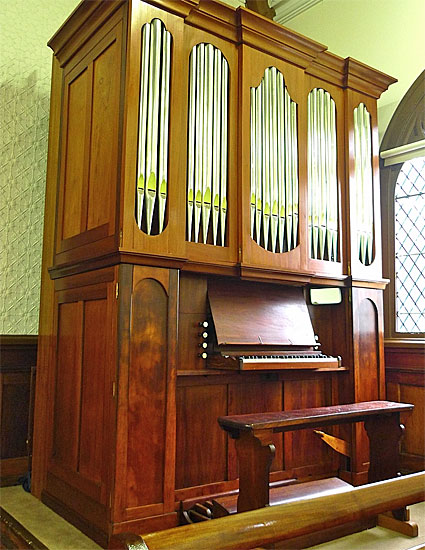
St Paul's Anglican Church, East Devonport : organ
[photograph by Trevor Bunning (May 2011)]
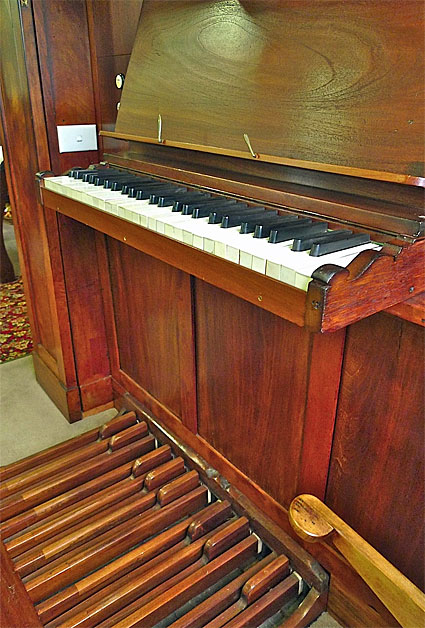
St Paul's Anglican Church, East Devonport : console
[photograph by Trevor Bunning (May 2011)]
The organ was built by Jesse Biggs, of Launceston in the 1860s for private use. It is likely that it was an organ described in the Examiner of 7 May 1864:
Organ Building. – Mr. A. Biggs, of Brisbane-street, has now in course of construction a small chamber organ, intended for a gentleman in the country. Though not quite completed, the instrument is in a sufficiently advanced stage of construction to enable one to form some idea of its merits, of which we can speak favorably. It has six stops, viz., stop and open diapason, principal, dulciana, flute, and the fifteenth, and possesses a nice tone. With the exception of the metal pipes and the key board, it is entirely the work of Mr. Biggs, and is a very suitable instrument for the purpose for which it is intended.2
A pipe organ of the same specification was advertised in the Launceston Examiner for 31 January 1883. It stated that the "front screen consists of 23 show pipes, richly gilt, case of rosewood and cedar polished; blowing action for hand and foot. Apply to W. Frith, Care of Messrs. McPhail and Weymouth."3 It is unknown where the organ was located between 1883 and 1890.
The organ was opened at East Devonport on Sunday 3 August 1890. The Launceston Examiner reported:
A WELCOME addition has been made to St. Paul's Church, East Devonport (say the N.W. Post) by a pipe organ, the first, we believe, that has been used on the North-West Coast. The instrument, which was built by the late Mr. J. Biggs, of Launceston, contains six complete stops, viz., open diapason, stop diapason, dulciana, principal, flute, and fifteenth, with an octave of bourdon pipes. 16ft tone. The case is very handsome, being of Sydney polished rosewood, with gilt pipe front. It stands on a platform 12in in height, at the west end of the church, and has a beautiful, clear tone. It is being erected and tuned by Mr C.W. Joscelyne, of Launceston, and will be played for the first time on Sunday week.4
Laurie Pipe Organs Pty Ltd, of Melbourne, carried out restoration work in 1975. The double-rise reservoir was removed at this time and was later recycled in the firm's restoration of the Samuel Joscelyne chamber organ for John Maidment. Ironically, Joscelyne may well have had Biggs construct such mechanisms for the three instruments he is known to have built in the 1860s.
Following the devastating fire of 12 January 2001, Hans Meijer expertly reconstructed in that year damaged parts of the instrument, although the dummy facade pipes were covered with tin foil in place of the original gilt finish.
MANUAL
Open Diapason
Stopped Diapason
Dulciana
Principal
Flute
Fifteenth
PEDAL
Bourdon
|
[8]
[8]
[8]
[4]
[4]
[2]
16ft
|
(enclosed)
TC
TC, gvd.bass
TC stopped
12 pipes
|
Compass: 54/20
Pedal pulldowns
Mechanical key and stop action
Trigger swell lever
This is a charming small organ in a delightful case and one of a handful of instruments built by Biggs that can now be identified and survive. The keyboard has scrolled cheeks and rounded ebony sharps, probably obtained (with the metal pipework) from the trade supplier Edward Violette, London.
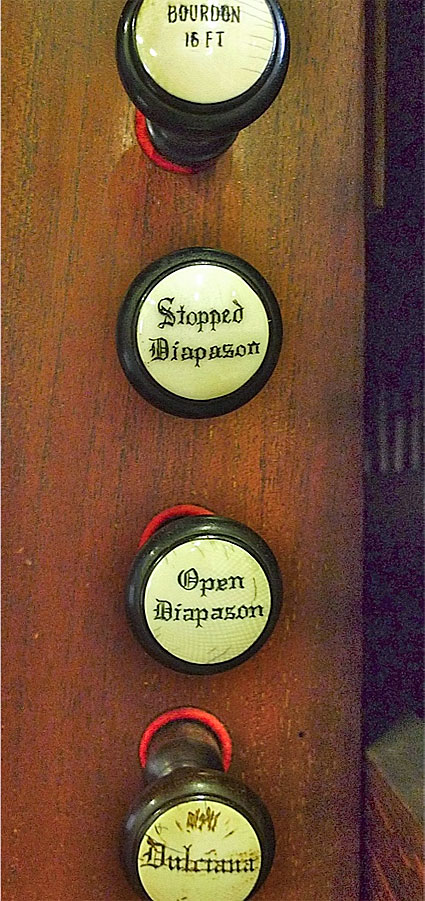
St Paul's Anglican Church, East Devonport : left hand stop jamb
[photograph by Trevor Bunning (May 2011)]
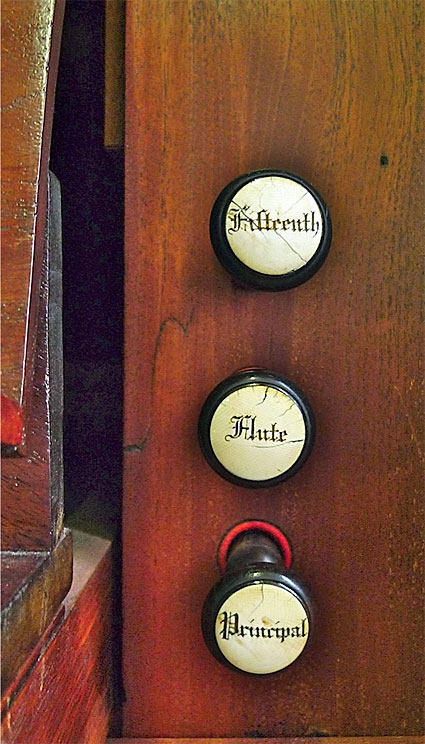
St Paul's Anglican Church, East Devonport : right hand stop jamb
[photograph by Trevor Bunning (May 2011)]
1 Charles Ramsay, A Short History of the Church of England, East Devonport. East Devonport, 1963, pp.2-3
2 Examiner, 7 May 1864, p.5
3 Launceston Examiner, 31 January 1883, p.3
4 Ibid., 25 July 1890, p.2








